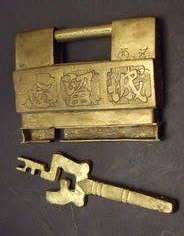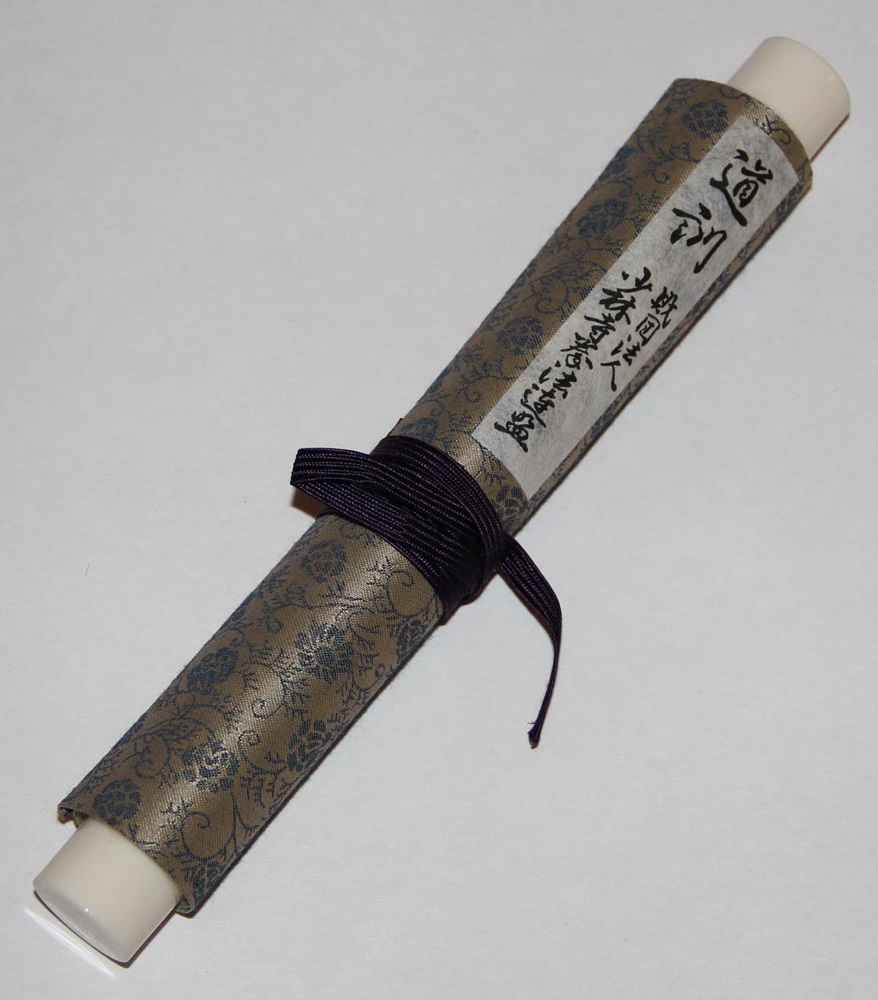Heian Nidan Description
After bowing and announcing the name of the kata ("Heian Nidan") ...
Yōi (cross open hands at groin level in
musubi dachi) and kiyomeri kokyū
(purification breaths)
Kamaete (shift right foot into nami heikō dachi
while closing hands into fists at knee width)
| 1 | Turn 90 degrees left into hidari neko-ashi dachi with hidari uchi-otoshi | |
| 2 | Step forward into migi han-zenkutsu dachi with migi oizuki | |
| 3 | Turn 180 degrees right into migi zenkutsu dachi with migi gedan barai, followed immediately by shifting right foot into migi han-zenkutsu dachi with migi uchi-otoshi | |
| 4 | Step forward into hidari han-zenkutsu dachi with hidari oizuki | |
| 5 | Turn 90 degrees left into hidari zenkutsu dachi with hidari gedan barai | |
| 6 | Step forward into migi zenkutsu dachi with migi age uke | |
| 7 | Step forward into hidari zenkutsu dachi with hidari age uke | |
| 8 | Step forward into migi zenkutsu dachi with migi wantō uchi | |
| 9 | Turn 225 degrees left into hidari zenkutsu dachi with hidari gedan barai | |
| 10 | Step forward into migi han-zenkutsu dachi with migi oizuki | |
| 11 | Turn 90 degrees right into migi zenkutsu dachi with migi gedan barai | |
| 12 | Step forward into hidari han-zenkutsu dachi with hidari oizuki | |
| 13 | Turn 45 degrees left into hidari zenkutsu dachi with hidari gedan barai | |
| 14 | Step forward into migi han-zenkutsu dachi with migi oizuki | |
| 15 | Step forward into hidari han-zenkutsu dachi with hidari oizuki | |
| 16 | Step forward into migi han-zenkutsu dachi with migi oizuki | |
| 17 | Turn 225 degrees left into hidari shikō dachi with hidari gedan shutō-barai uke and kiai | |
| 18 | Step forward into migi shikō dachi with migi gedan shutō-barai uke | |
| 19 | Turn 90 degrees right into migi shikō dachi with migi gedan shutō-barai uke | |
| 20 | Step forward into hidari shikō dachi with hidari gedan shutō-barai uke |
Zanshin yame (withdrawing left foot, turn 90 degrees
left and return to kamaete)
Naotte (perform tekagami movement while sliding right
foot into musubi dachi)
Rei (bow)


 The
word Heian (平安) means "constant serenity,"
so a key objective of training in the five Heian
kata is to develop a set of skills sufficient to
provide the confidence and determination to prevail needed to face a potentially
violent or other highly stressful situation with complete peace
of mind.
The
word Heian (平安) means "constant serenity,"
so a key objective of training in the five Heian
kata is to develop a set of skills sufficient to
provide the confidence and determination to prevail needed to face a potentially
violent or other highly stressful situation with complete peace
of mind.